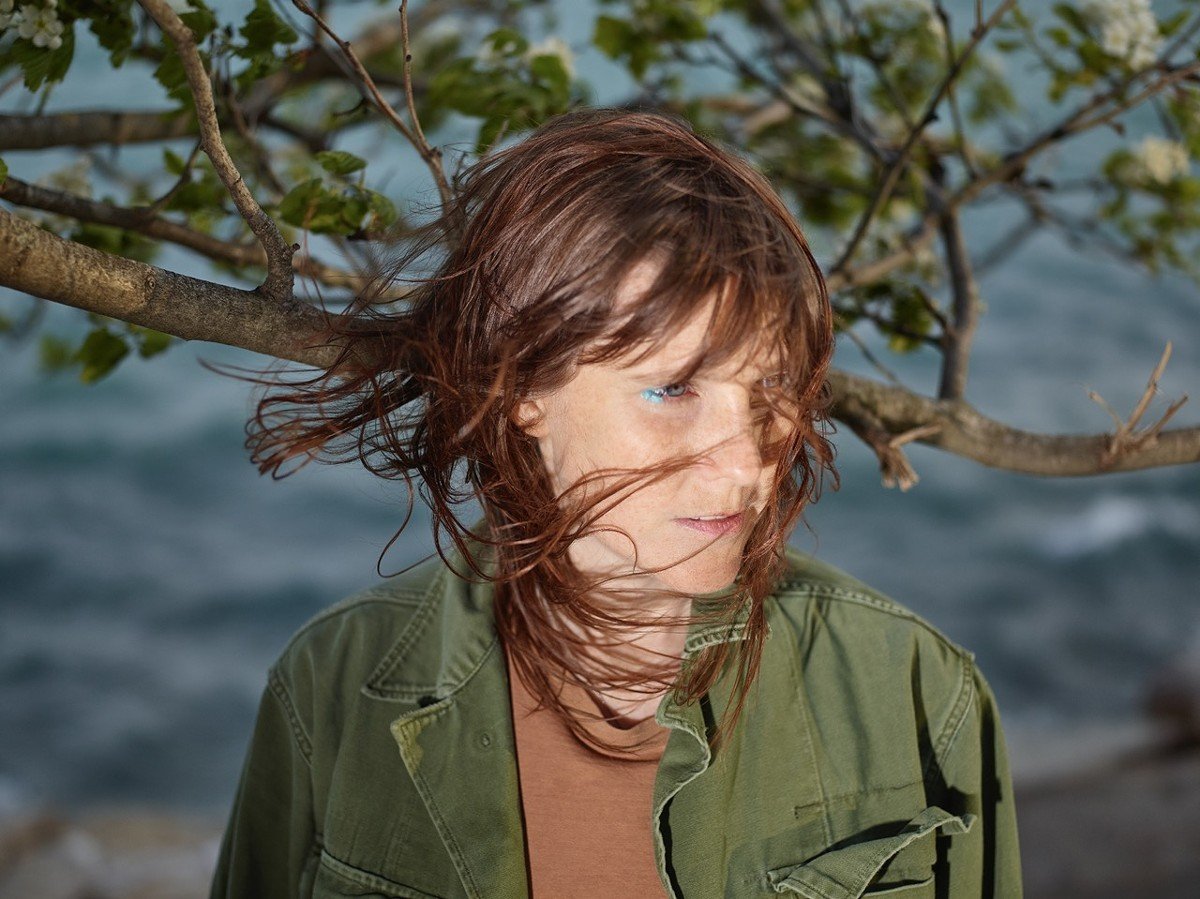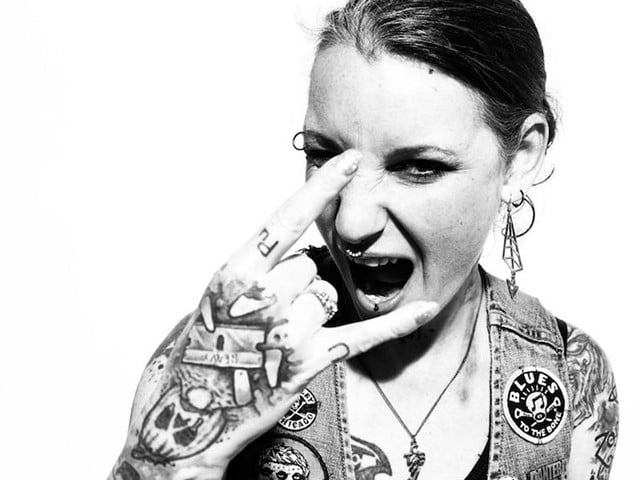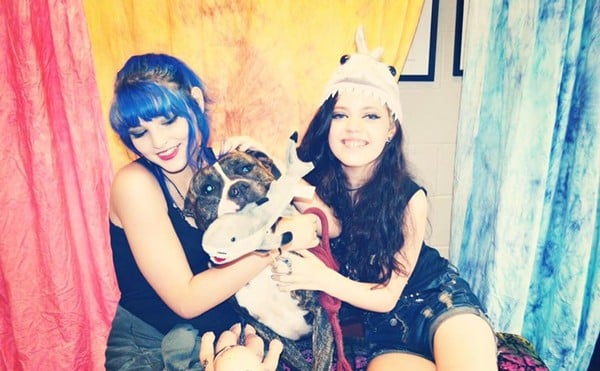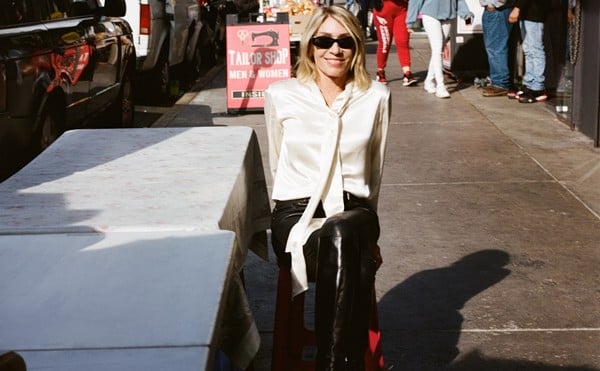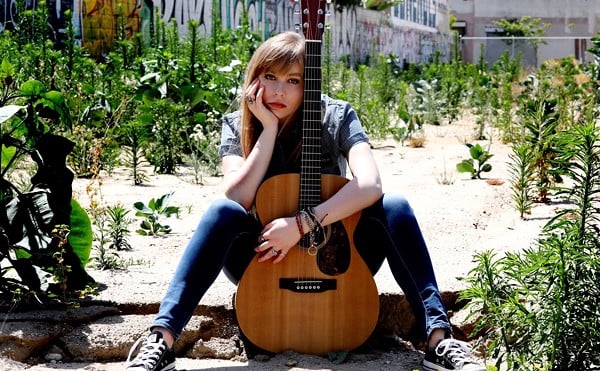Whitney Johnson, also known by the name of the ongoing drone/noise project Matchess, brought the signature haunting, ethereal music to Louisville on Monday, June 10. Before the fantastic set, filled with droning synths, echoing vocals, and dissonant viola, LEO was able to sit down with Johnson for a short interview about influences, current tour, and upcoming projects.
LEO: To start, could you give me a quick overview of your musical past?
Whitney Johnson: Yeah, I played a little bit of piano/keyboard. I actually played keyboard when I was very little. We didn’t have a piano so it was just this keyboard that only played two notes at a time, so by the time I got to music that required more than two notes, I had to quit piano lessons. I picked up viola when I was about 10 years old in school, because our school had orchestra. It was really nice, I’m really thankful for that school orchestra.
When did you start doing this sort of very experimental, overlay-heavy type of music?
This project [Matchess] started in 2009, but I didn’t actually play a live show until 2011. So that was mostly [about] a year and a half of recording, getting it together, kind of figuring out what the music was. I put together a couple of tapes, mostly just writing songs. Then live started in 2011.
What artists have been most influential in your latest projects?
So many. I have two records that are coming out this September. I just got the release date, September 27, and they are by two artists. One is by Whitney Johnson, the other is by Matchess. The Whitney Johnson LP is inspired by this musician Deuter, who is this German Krautrock musician. He made some recordings for the Rajneeshis and for Osho, and there is one that’s music for a shaking meditation, and it uses this sort of keyed percussion, and that was so inspiring for me. I’ve never played keyed percussion, and so I’ve gotten into the marimba. I’m playing some marimba music [now] and it’s so much fun. I’m not a marimbaist, I’ve never played that kind of instrument, but I just fell in love with the sound. [The combination of] the wooden keys and then metal resonators, the combination of those different elements are just so magical to me.
What artists have been influential for Matchess, that sort of ethereal, drone sound?
That just goes in so many directions. I feel like the sound is very soupy and has so many layers. It could be muddy, some could say, but that goes the same for the influences leading to it. They’re all very soupy and a mess of different things. When I was getting started, I was listening to Grouper a lot, Liz Harris’s music.
What pieces are you most proud of, specific songs or albums?
In general, I love the record The Rafter, because it was so direct. It came from a place where I was just going through a real transformation in my life, but it was a difficult time. It just came out of me so quickly. Other records have been very crafted, very slow, and kind of meticulous. [The Rafter] came in a few weeks, and it felt so direct and unedited. Sort of first thought, best thought approach. I love that record.
Your music has a very atmospheric and cinematic feel to it. Have you ever scored any films or thought about doing that?
I have done stuff with other projects, but with [Matchess] I haven’t exactly scored any films, but I made this record Sonescent that just came out in 2022, and the filmmaker Debra Stratman just contacted me and asked if she could use some of my music in her film. I was so honored because she had so many other amazing artists that she had contacted, and she used a section of [Sonescent]. It’s all about the sort of geological history of the planet, but then also of the cosmos. It’s very macro to micro, and abstract, but mostly about geology. The slow movement of rocks through time connected to that record for me, and I guess for her too.
You are touring with two other artists, Haley Fohr and Lula Asplund, can you tell me a little about them and how working with them has been?
Playing with them has just been a dream. In the first place, with Haley, I’ve been playing with her for probably ten years, playing viola in her project [Circuit des Yeux]. We’ve done other collaborations as well, but I’ve been playing in Circuit des Yeux for a long time in different contexts, sometimes just touring, sometimes just recording. We’re almost sisters at this point, so it was very fun to flip it around and ask her to play with me for a summer. We’re doing two different tours, 28 dates total that we are doing in this trio format, but with two different trios. Lula is going to play with us on this first [half], the East Coast trip, and then another collaborator, Jenny Pulse, is going to play with us going West. Haley is doing both though. It’s going to be a real treat to collaborate again with her in a new context.
Lula is a sound artist that does such great work with texture and voice, and so I reached out and just asked if she wanted to join the tour going East, and I think it works really well. They mostly use synthesis, voice processing, but then also computer music and Max/MSP programming, so a lot of that stuff is really a good component with the organic/acoustic sound of marimba, viola, and voices in general. There’s a lot more high frequency, sort of crunchy information that Lula is contributing that’s a really nice [mix] with the more muddy, mid-lows that I’m obsessed with. I’m always in the mid-low range and it gets pretty thick, so it’s nice to lighten [the sound up] with her.
You mentioned you have two albums coming out, could you tell me about those?
So, Hav is the LP by Whitney Johnson and then Stena is the cassette by Matchess. It’s more of a noise tap, it’s very collaged, sort of in the style of past Matchess records, but it has more songs and more lyrical information. It also has more field recordings and more sort of hodgepodge, angular changes that move between sections, also these references that are made to sounds on other records, so it’s this sort of internally referential system. Then Hav is very much its own thing. It’s just instrumental and has no voice at all, and it’s only five instruments, being sine waves programmed in Max/MSP, viola, marimba, halldorophone, and synthesizer that’s sequenced. It’s much more composed and direct, sort of like “here’s the map, here’s the directions.” It’s much more clean sounding, more open and spacious.
This tour is pretty long. Are there any cities you are most excited about getting to play in?
That’s hard to say, but one that comes to mind is — at the end of the trip —we are going to be playing San Juan Island off the coast of Washington in this Geodesic dome on the island called the Alchemy Arts Center.
Final question, where does the name Matchess come from?
It comes from many places, the most direct though is from the Chicago Reader, an alt-weekly, and they had a section called The Matches Section that was personal ads and I used some text from that and some personal ads for lyrics way early on, back in 2009. Where the extra “s” comes from I have no idea, though.

